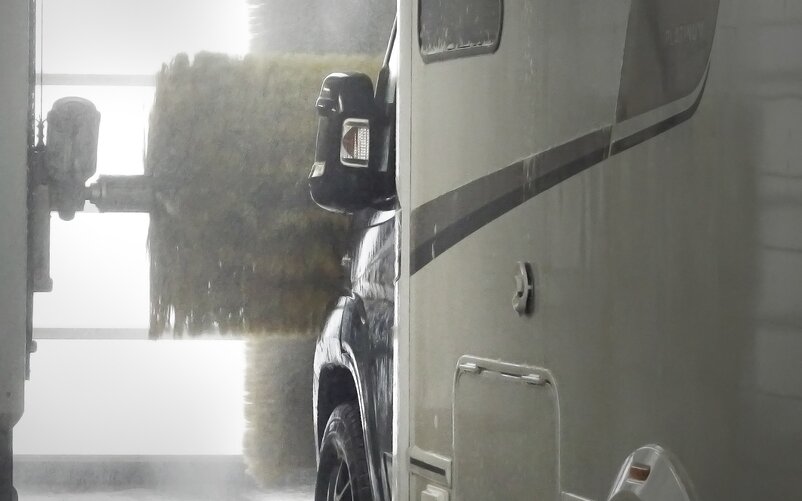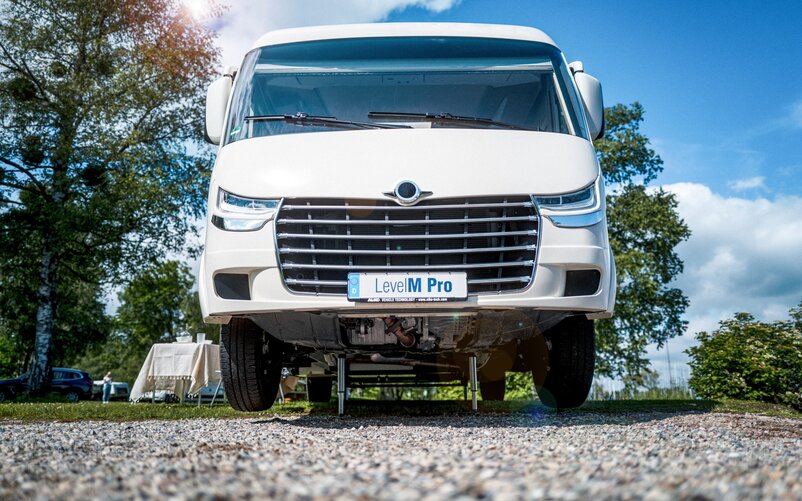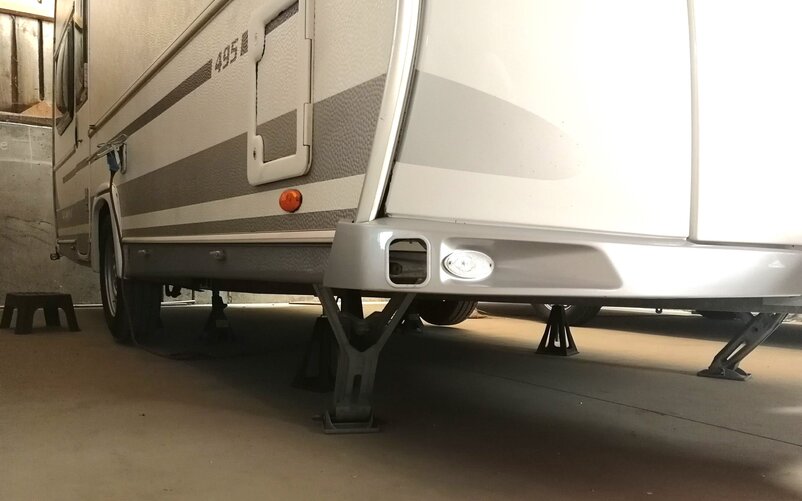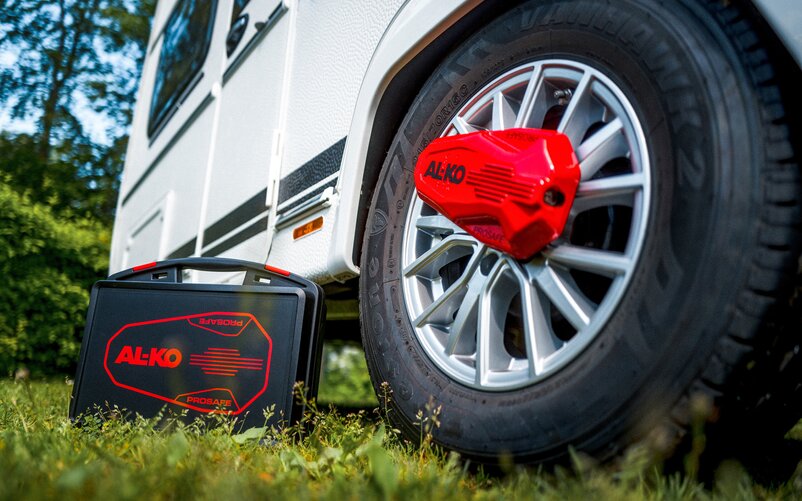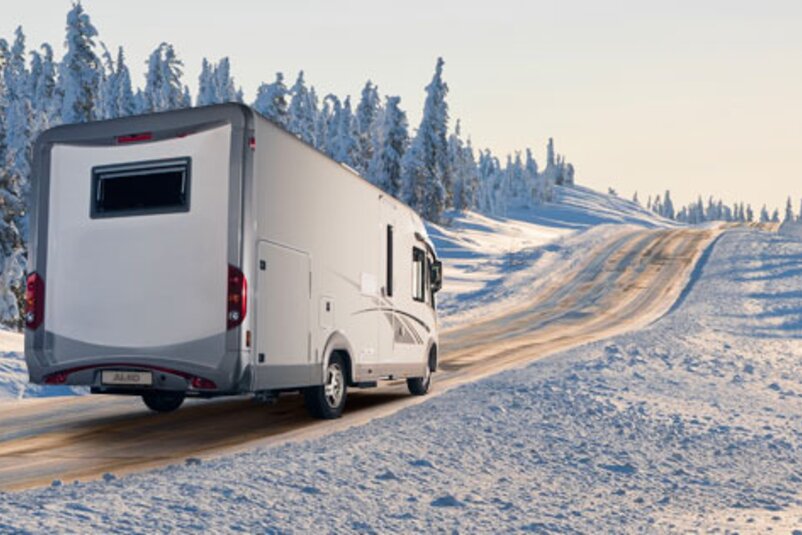Mothballing motorhomes and caravans for the winter
The leaves are falling, the days are cooler, temperatures drop below freezing at night – for campers, these are signs that it’s time to start winterizing their motorhome or caravan. Proper winterizing protects your camper from damage. So you can start the next camping season in spring feeling relaxed and carefree.
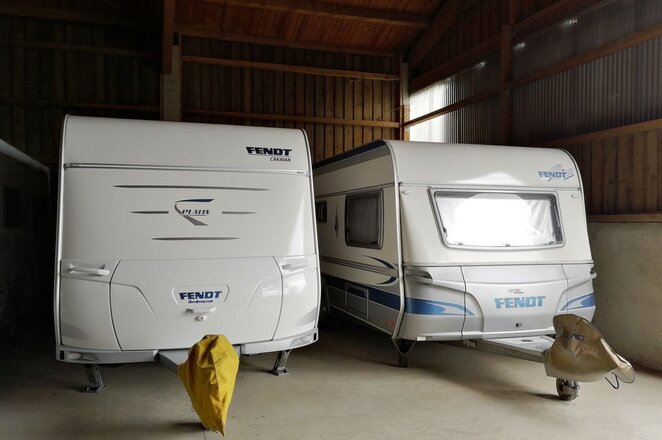
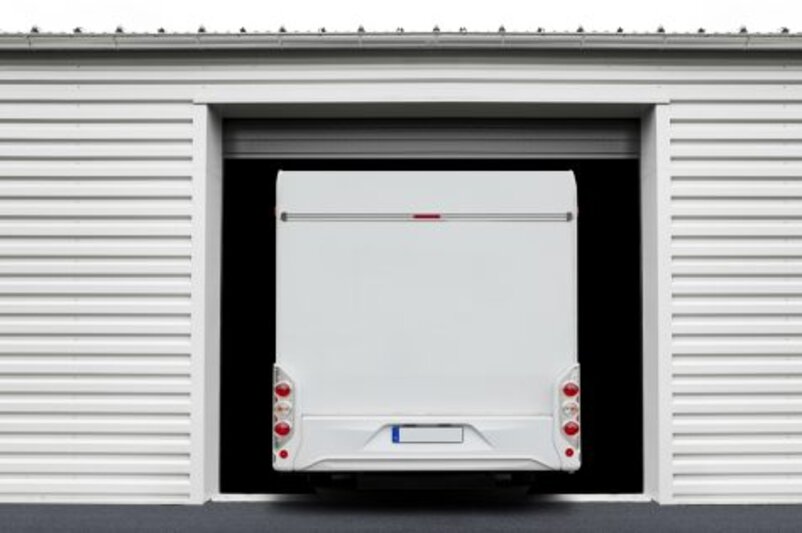
The most important points in brief
- The winter conditions at your campsite or pitch determine what work is needed for winterizing.
- Thorough exterior cleaning and optimum care of the living area protect against damage.
- Body batteries require special attention, and gas and water pipes should also be drained thoroughly.
(Searching for and) preparing your pitch for the winter
If you have found a parking space for your campervan that you either use all year round or rent especially for the winter, it depends on the conditions there whether you need to take additional precautions or not. If the pitch is located in an outdoor area with no shelter, you should pay particular attention to the roof, the roof windows and any seams or joins. Everything here must be absolutely watertight to prevent snow, rain or waterlogging from penetrating inside. Leaves, small twigs or other greenery on the roof can also lead to leaks, for example if they press into a seal and make it porous. It is also advisable to position the campervan at a slight angle so that water can drain away better.
If you want to use a tarpaulin or cover for the campervan, you should make sure that it does not lie directly on the vehicle, otherwise the air will not circulate properly. This can result in unpleasant odors, moisture and mold. For caravans, there are also special covers for the drawbar and front locker that protect against the weather.
If you have a covered outdoor pitch, e.g. in a hangar or shed, you don’t have to worry about wet weather so much. However, there is another danger here: mice. Experience has shown that the likelihood of a mouse getting into a motorhome is greater in barns and hangars. At best it will only hibernate there, at worst it will cause gnawing damage. A thorough clearing out followed by the best possible cleaning are also advisable here to avoid attracting rodents in the first place. An ultrasonic repellent can also scare them off.
Exterior cleaning and technology
Washing your campervan before winterizing it is like spring-cleaning at home – only before instead of after winter is best for your motorhome or caravan. It is also important to take care of the technology so that it survives the winter well.
Thoroughly clean the exterior
Dirt that is not washed off can lead to leaks at the seams or roof hatches due to changing temperatures and rising damp. You can either wash it at an official washing area (for self-washing) for motorhomes or trucks, and there are also special washing facilities for these large vehicles.
In the first step, hose down the exterior and carefully scrub it with a brush and detergent – it is best to wash the lower base afterwards to remove dirt from the chassis. Think about the wheel arches as well. Windows and roof hoods are usually made of acrylic and so should be omitted. You can get special cleaners and cloths to prevent scratching these. Then dry it, or leave it to dry – and then the exterior cleaning is finished, which can take some time depending on the size of your campervan.
Check the tire pressure
On your way to or from the wash station, you can take the opportunity to increase the tire pressure slightly – up to 0.5 bar above the usual value is recommended.
Close gas cylinders and empty water pipes
Back at the wintering site, there is some work to be done that is not needed during other breaks in the travelling season. As your campervan may be exposed to sub-zero temperatures in winter, depending on where it is parked, it is advisable to empty the water completely – not only in the fresh and wastewater tanks, but also in the boiler, the water heater and especially in the pipes. “Blowing the taps free” protects them from frost damage, which can lead to expensive repairs and the need for replacement parts. An inflated balloon is very useful here, as it can be held against the taps to clear the pipes as the air escapes from it. Another way is to turn the taps “on” again when everything has been drained and the pump is off.
For the gas supply, the valves on the gas cylinders should be closed and the hoses unscrewed. This is followed by “blowing free” the pipes, which can be achieved by simply turning on the stove so that the remaining gas can escape from the pipes.
Maintaining the body battery(ies)
If you are unable to keep 12-volt body batteries regularly charged in winter by connecting them to an electric hookup or sufficient solar energy, it is advisable to remove the battery(ies) so that they do not become completely discharged. The requirements and charging cycles vary depending on the battery type and size. But if you can’t charge them at all for several months, the best way to protect your battery(ies) is to remove them. They should be as fully charged as possible before removal. Then they should be stored in a frost-proof room. This is the best way to help them to survive the winter.
Additional equipment: Suspension systems, maneuvering systems, etc.
All AL-KO suspension systems and support systems such as the HY4 or LevelM Pro on motorhomes and vans can be sent off for their winter break without any maintenance. If air suspension is fitted, it is advisable to set it to driving level and, in the case of manual air suspension, to the normal driving pressure so that the bellows do not become depressurized. When combined with a support system, the air spring is simply switched off when ready to drive or the automatic air spring is deliberately deactivated. This allows the support system to stabilize the vehicle without the air spring uncoiling. Special accessories such as the AL-KO MAMMUT maneuvering system, the ATC anti-snaking system or the stabilizer coupling do not require any special maintenance for winter storage.
Cleaning and storing accessories
Antennas, satellite systems, awnings and sun blinds should also be cleaned thoroughly one last time before storage. In the case of permanently installed awnings, it is also a good idea to grease the joints. Bike covers, awning carpets, etc. should also be cleaned before storage over the winter, leaving no crumbs or mud residue so they are ready for use again in the spring.
Winterizing the interior
In a campervan, the winterizing tasks are not much different from those for a normal travel break, although you may be a little more thorough in some areas. Here are the most important steps:
- Clear out any food and drinks
- Clean and dry the refrigerator; leave the refrigerator door open
- Clean the kitchen or kitchenette thoroughly
- Clean the bathroom and rinse the toilet cassette thoroughly, for example with a chlorine-water mixture
- Clean furniture with gentle products, such as mild soapy water
- Place furniture cushions upright for good air circulation
- Thoroughly vacuum and clean surfaces, floors and cupboards to avoid any food residue, crumbs, etc.
- Leave cupboards or hatches inside open if possible to ensure good air circulation
- Remove moisture-absorbing materials such as clothing, towels, kitchen roll or toilet paper from the campervan
- Clear out any electronic devices
Grease locks and hinges to ensure they function smoothly next season; suitable products for maintaining seals are available in specialist camping shops. The caravan’s handbrake and jockey wheel should also be treated with a little grease.
Levelling the vehicle
When everything is ready, the vehicle is leveled and any unevenness is compensated for with ramps or shims. If you have a support system installed, you can use it to compensate for any unevenness. For caravans, the supports are then cranked down to give the vehicle the necessary stability when parked.
But beware: Under no circumstances should the caravan be levelled using the supports – this can permanently damage the body! If you want to be really precise, you can also support the caravan with trestles or jacks. Only take a little weight off the axle, so that the wheels stay in firm contact with the ground. Then all you have to do is add antifreeze for the engine and windscreen washer system and fold the windscreen wipers forward so that the rubber lips do not freeze to the windscreen. Tip: You should not leave the handbrake applied over winter if possible, otherwise the brake shoes may stick to the drum.
Install anti-theft device if necessary
Last but not least, it is advisable to prevent thieves from gaining easy access to your campervan while it’s in its winter quarters. The best anti-theft devices for caravans include drawbar locks and wheel clamps.
Are you a winter camper?
Do you crave snow adventures, ski slopes and romantic evenings in your motorhome when it’s really cold outside? Then you can find tips for winter camping here!
